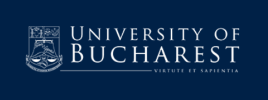Organization Vs. Strategy Towards Rethinking Management for Trajectories of Resilience in World Pandemic Post-Crisis
DOI:
https://doi.org/10.14276/2285-0430.2379Abstract
The recent history of organizational modelling shows a dominant position of strategy on organization with a weakening of the former in front of growing global complexity and change all over the world. In recent years we have seen organization as “part” of strategy as a dynamic counterweights process of action able to improve managers to take decisions often decoupling them, to put them back together in better and more suitable organizational models for more dynamic stability and gaining resilience in front of innovation and change. We see in digital world – in particular - to the organization as a (quasi)-substitute for an increasingly weaker concept of strategy as linear process and an alternative and flexible solution to the failures by the logic of pure calculation of consequences (deterministic rationalism) or simple reactivity – as describe by Pavlov 100 years ago - (bound by external resources), or enclosed in the narrow spaces of a contingent intuitionism of the Bergsonian type (subjectivism and dependence on the constraints of internal resources). Analyzed rigorously by Weaver in the interaction between complexity and science because all problems which involve dealing simultaneously with a sizable number of factors which are interrelated into an organic whole that needs of a governance action both with or without information or decision. Exaptation is a model mutuated by biology able to produce solution before problems and in particular after post pandemic crisis.References
Butera F.(2005), “Il Castello e la rete: impresa, organizzazioni e professioni nell’Europa degli anni ’90”, Franco Angeli, Milano.
Capra F. (1996), The Hidden Connections. Integrating the biological, cognitive and social dimensions of life into science of sustainability, Doudleday, New York.
Chandler A. (1962), Strategy and Structure: Chapters in the History of the American Industrial Enterprise, Beards Books, 2003.
Chesbrough H. (2012), The Open Innovation Model, Research Technology Management, 55(4), 20-27.
Costa G.(2018), Relazione tenuta alla Conference “L’azienda esiste ancora”, Padova Università degli Studi
Dioguardi G.(2007), Le Imprese Rete, Bollati Boringhieri, Torino.
Drucker (1986), The Frontiers of Management. Where Tomorrow’s decisions are being shaped today, Truman, New York.
Gould S.J., Vrba E.S.( 1998), Exaptation: il Bricolage dell’evoluzione, Bollati Boringhieri, Torino.
La Porta C., Pilotti L., Zapperi S. (2020) (eds.), Understanding Innovation Through Exaptation, Springer.
Maturana H., Varela F.(1987), The tree of knowledge, Shambhala, Boston.
Motterlini M., Guala F. (2011), Mente Mercati Decisioni – Introduzione all’economia cognitiva e sperimentale, EGEA, Milano.
Pearl J., Mackenzie D. (2018), The Book of Why: The New Science of Cause and Effect, May, Basic Book, Hachette Book Group.
Pilotti L. (1984), Mutazioni tecnologiche e catastrofi: verso un modello di cambiamento discontinuo; Economia e Politica Industriale, 123-157.
Pilotti L. (2011) (a cura di), Creatività, innovazione e territorio – Ecosistemi del Valore per la Competizione Globale, Il Mulino, Bologna.
Pilotti L. (2017), Produttività cognitiva e politiche industriali locali; Edizioni Accademiche Italiane EAI, Berlin.
Pilotti L. (2019), Organizzazioni Emotive (Creative e intelligenti); McGraw Hill Italia, Milano.
Rebora GF. (2017), Scienza dell’Organizzazione, Carocci, Roma
Rullani F., Rullani E. (2017), Dentro la Rivoluzione Digitale, Giappichelli, Torino.
Thom R. (1980), Stabilità strutturale e morfogenesi. Saggio di una teoria generale dei modelli, Einaudi, Milano.
Downloads
Published
How to Cite
Issue
Section
License
L'opera è pubblicata sotto Licenza Creative Commons -CC Attribution-ShareAlike 4.0
Accepted 2020-11-30
Published 2020-10-30



